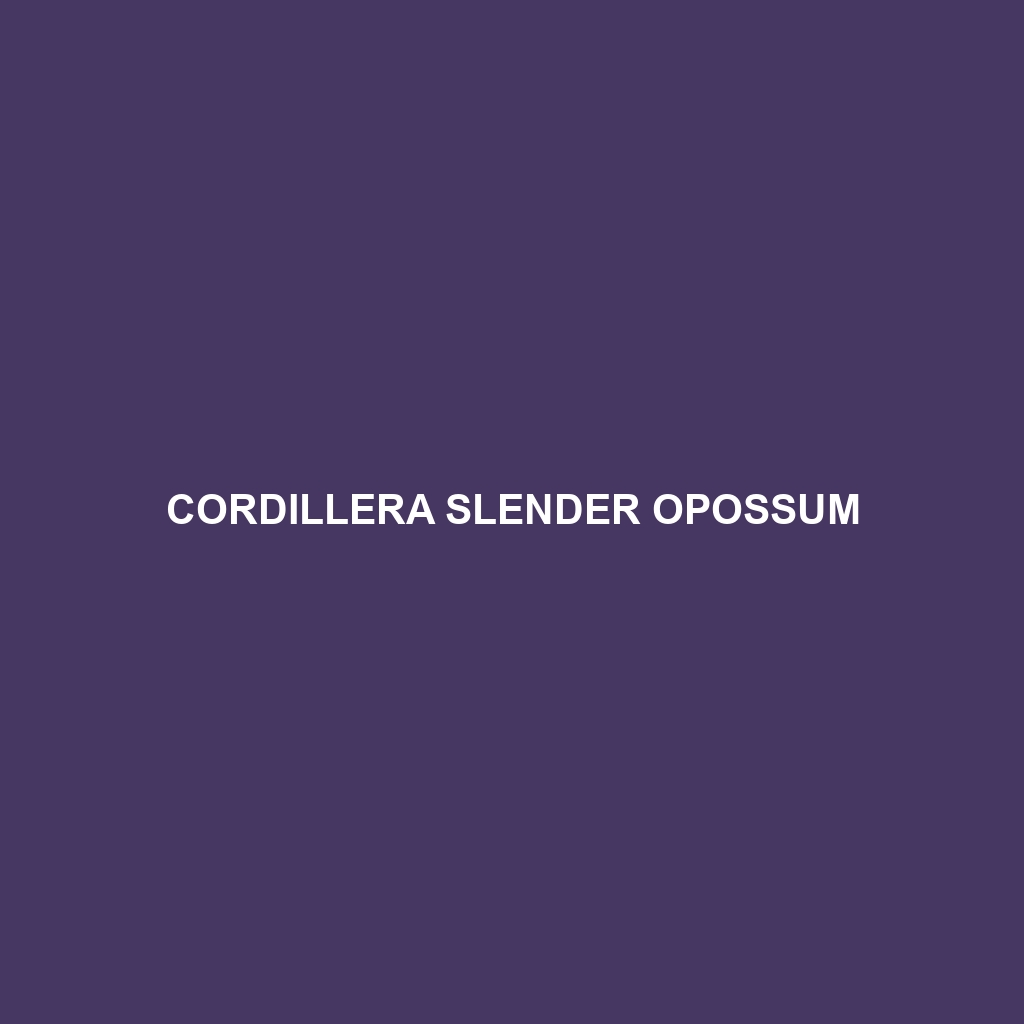Cordillera Slender Opossum: A Detailed Description
The Cordillera Slender Opossum (Marmosops impavidus) is a small, nocturnal marsupial native to the montane forests of the Andes in South America. Known for its slender build and agile movements, this opossum plays a crucial role in its ecosystem through seed dispersal and insect control.
Physical Characteristics
Size: The Cordillera Slender Opossum is relatively small, with an average body length of 10-12 cm (4-5 inches) and a tail length that can extend an additional 15-20 cm (6-8 inches). Adults typically weigh between 25-40 grams (0.9-1.4 ounces).
Coloration: This opossum exhibits a fur coat that ranges from grayish-brown to olive green on the dorsal side, while the ventral side is lighter, often white or cream-colored. The tail is prehensile and often bicolored, darker on the upper side and lighter underneath.
Special Features: The Cordillera Slender Opossum has large, forward-facing eyes adapted for nocturnal vision, sharp claws for climbing, and a long, flexible tail that aids in balance and grasping branches.
Behaviors
Social Interactions: Typically solitary, the Cordillera Slender Opossum is known to be territorial. It relies heavily on olfactory and auditory signals to communicate with others, especially during the breeding season.
Feeding Habits: As an omnivore, this opossum’s diet includes a variety of fruits, insects, small vertebrates, and occasionally nectar. Its role as a seed disperser is vital for the health and regeneration of its forest habitat.
Ecological Roles: By controlling insect populations and dispersing seeds, the Cordillera Slender Opossum contributes significantly to the biodiversity and ecological balance of its montane forest environment.
Habitats and Adaptations
Habitat: This species is typically found in the humid, montane forests of the Andes, at elevations ranging from 1,000 to 3,000 meters (3,280 to 9,840 feet). It prefers dense undergrowth and areas with abundant foliage.
Adaptations: The Cordillera Slender Opossum is well-adapted to its arboreal lifestyle. Its prehensile tail and sharp claws allow it to navigate the forest canopy efficiently. Furthermore, its nocturnal nature helps it avoid many diurnal predators.
Conservation Status
Current Status: The Cordillera Slender Opossum is currently listed as Least Concern by the IUCN Red List. However, habitat loss due to deforestation and human encroachment poses potential threats to its population.
Conservation Efforts: Efforts to preserve its habitat through sustainable forestry practices and protected areas are crucial for the continued survival of this species.
Fun Facts
1. Marsupial Pouch: Like other marsupials, female Cordillera Slender Opossums have a pouch where they carry and nurse their young until they are mature enough to survive outside.
2. Agile Climbers: Their physical adaptations make them incredibly agile climbers, capable of leaping significant distances between branches.
3. Nocturnal Foragers: These opossums are most active during the night, using their keen sense of smell and excellent night vision to locate food.
In , the Cordillera Slender Opossum is a fascinating and vital component of the Andean montane forests. Its unique adaptations and behaviors make it an interesting subject for study and conservation. Protecting this species ensures the continued health and diversity of its ecosystem.
